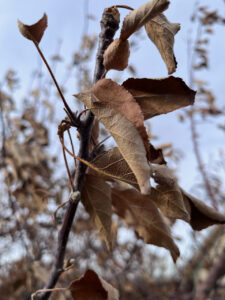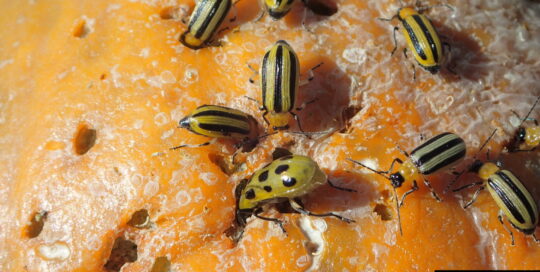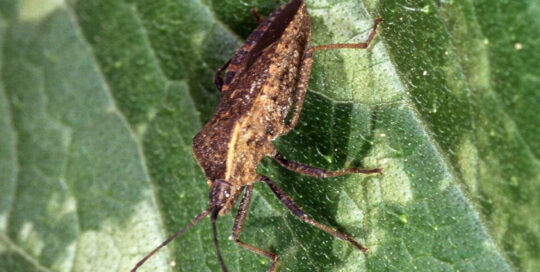Why Do Our Apple Trees Still Have Their Leaves?
Views: 1023

In this mid-winter thaw, I noticed my apple trees still have their leaves. While this could be a sign of fire blight, it’s more likely a less dire reason.
Why do some trees retain leaves over winter?
Blame it on the weather
Not to sound like a broken record, but it was another really odd autumn. Not that I’m complaining. It was the nicest I ever remember, at least until the first part of November. But the quick switch from warm to cold caused the leaves to stay on the apple trees. It’s what is called a marcescent fall.
During a typical season as the days become colder the tree pull nutrients from the leaves in preparation for the winter. When this happens, a layer forms at the leaf stalk, which causes the leaf to fall after the process is complete. But when it was as warm as it was last autumn, then turns cold quickly, the leaves are killed before the layer is formed. So the leaves are stuck. This happens more typically with trees like oaks and beech, but it can happen to nearly any deciduous tree.
Typically not an issue
The good news is even if it’s unsightly, it most likely isn’t caused by fire blight or another disease. With that said, if there is only one branch that held onto the leaves, or a branch has cracked bark, dark areas that look burnt, or fruit hanging on throughout the winter, that can be a sign of blight. If that’s the case, I’d cut it out in the spring.
Leaves hanging one also doesn’t mean the tree is necessarily harmed, although you do want to examine it closer to springtime to make sure. One of the greatest risks is a heavy snow causing damage because the leaves hold a greater snow load causing branches to snap. If there’s a concern, shake the snow off of the branches during a storm.
Handling spring tasks
The question many people have is how to handle typical spring tasks when the leaves are still on the trees. Although the dead leaves will come off as the new ones push through, you don’t want to necessarily wait that long. Prune them as normally in the later winter or early spring.
Pruning Fruit Trees for Maximum Yield
As always, start by removing any damaged branches, then continue to shape the tree and take out branches that are either in the way or not productive. Pay close attention to the branches that retain their leaves. If you notice cracking at the ends, snip off that section. And, of course, if heavy snow broke any branches, remove them, as well.
After pruning, the next spring task is dormant oil spraying. Once again, this can be accomplished while there are still leaves on the trees. While the trees need to still be dormant, don’t spray too early. Wait until you have a time when the temperatures are staying mostly above freezing. This means the insects are starting to wake up for the season, making the treatment more effective. Pay close attention to spray in the nooks and crannies of the trees where insects may overwinter.
While retaining leaves on the fruit trees is not a huge issue, it’s something to watch. As long as you don’t see cracked or discolored branches, or retained fruit, consider it an anomaly of a warm fall followed by a cold snap. Everything is fine, except for maybe needing to rake leaves in the spring!
Meet Amy Grisak
Amy is a freelance author and photographer in Great Falls, MT who specializes in gardening, foods, and sustainable agriculture. She provides information on every kind…
Amy's Recent Posts

How to Handle the Cucumber Beetle








